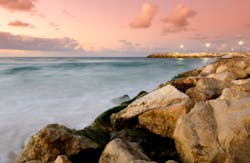Water Technology interviews Stuart A. Hoenig about generating fresh water from seawater
BIRMINGHAM —Water Technology Assistant Editor Maria Woodie interviews Professor Stuart A. Hoenig, Emeritus, Electrical & Computer Engineering Department with the University of Arizona, about a method that involves creating fresh water from seawater.
Water Technology: You previously mentioned in an email to our publication that the basic idea of obtaining fresh water from seawater was suggested around 20 years ago, but was ignored. Why do you think this concept was ignored back then, and why is it important to address now?
Stuart A. Hoenig: The concept was ignored because at the time there was no water shortage and very few people thought about the future. Now, we are facing a world shortage of fresh water for [applications such as] agriculture. It is worse in California, which is the major source of fruits and vegetables in the U.S., and at present there is no way to desalt the Pacific Ocean (right next to California) at prices that agriculture operators could [afford to]pay.
WT: In general terms, can you please discuss some of the technologies available to extract fresh water from seawater?
SH: There is solar evaporation, which is simple but too expensive for general use. There is the familiar technique using reverse osmosis; in fact, Arizona has a federally supported plant in Yuma some 70 miles from the Gulf of California. It is operated about once a month.
I am [an advocate of] a system that takes advantage of the fact that liquid water has a vast number of positive-charged water drops.
WT: How does obtaining fresh water from seawater help to address today’s critical water challenges, such as water shortages and droughts?
SH: The oceans are the only large water source on the planet. In normal times, evaporation from the oceans has provided the water to drink and to grow things. Now the Earth is in a long dry spell. [And as the population keeps increasing], using charge-driven evaporation [can help provide an] answer to the world water shortage and droughts.
Water is preserved in the ground, which has happened naturally for millions of years. This stored water is sometimes too salty for use, but the unsalted water has been tapped for years. The problem in California is that the available underground water is pretty well gone. The idea of injecting seawater into the Earth raises the question: “How long will it take to make the salt water into fresh water?”
WT: Is there anything else you would like our readers to know regarding fresh water and/or fresh water extraction?
SH: People should know that the crisis of drinking water shortages is upon us. Some areas of the planet, primarily the deep North and South regions may not have felt it yet, but they should realize that the great majority of food is in what might be called "the dry area.”


